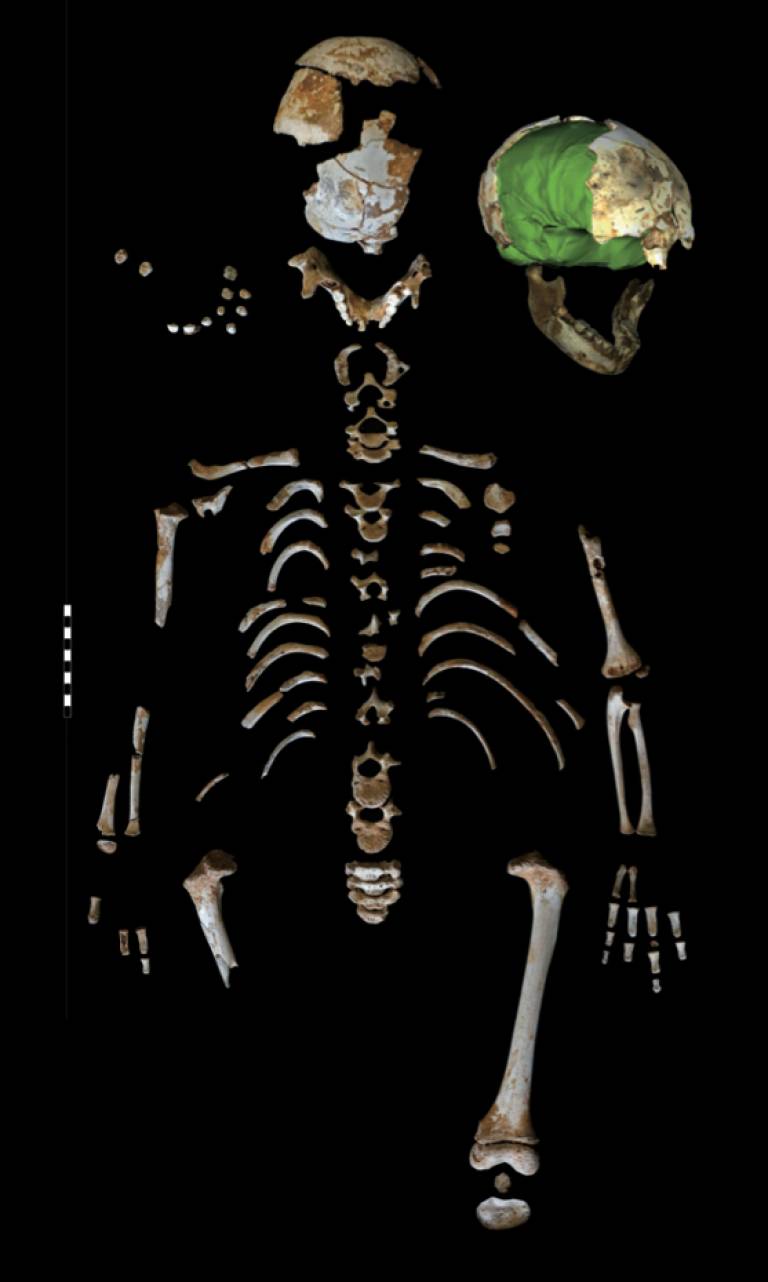The growth pattern of Neandertals, reconstructed from a juvenile skeleton from El Sidrón (Spain)
22 September 2017
Ontogenetic studies help us understand the processes of evolutionary change but no one single system defines the ontogeny of an individual.
 Previous studies of Neanderthals have focused more on the pace than the pattern of growth. Thirteen genetically related Neanderthals have been recovered from the 49 ky site of El Sidrón, Asturias, Spain, including a new juvenile partial skeleton for which there is associated dental, cranial and postcranial material. This individual provides the first opportunity to establish chronological age using dental histology with which to compare growth across the skeleton. A team of scientists based in Madrid (led by CSIC's Antonio Rosas and Luis Ríos) and at UCL (CBD's Christopher Dean) and QMUL (Institute of Dentistry's Helen Liversidge) have together explored the development of this specimen. Maturation of almost all cranio-dental and postcranial elements falls within the expected range of modern humans of this age. However, at around 7.7 years of age, the most striking difference in growth between Neanderthals and modern humans occurs in the vertebral column. The atlas and the mid-thoracic vertebral bodies and neural arches remain unfused and at a stage more typical of a modern 5-6 year old child and so appearing to take longer to establish the larger more capacious adult morphology of the Neanderthal chest. Furthermore, a number of endocranial features suggest that at the time of death brain growth was not yet completed. The implication of these findings is that Neanderthal brain growth and somatic growth must have incorporated changes in both rate and timing that differ slightly from modern humans today in order to achieve their adult size.
Previous studies of Neanderthals have focused more on the pace than the pattern of growth. Thirteen genetically related Neanderthals have been recovered from the 49 ky site of El Sidrón, Asturias, Spain, including a new juvenile partial skeleton for which there is associated dental, cranial and postcranial material. This individual provides the first opportunity to establish chronological age using dental histology with which to compare growth across the skeleton. A team of scientists based in Madrid (led by CSIC's Antonio Rosas and Luis Ríos) and at UCL (CBD's Christopher Dean) and QMUL (Institute of Dentistry's Helen Liversidge) have together explored the development of this specimen. Maturation of almost all cranio-dental and postcranial elements falls within the expected range of modern humans of this age. However, at around 7.7 years of age, the most striking difference in growth between Neanderthals and modern humans occurs in the vertebral column. The atlas and the mid-thoracic vertebral bodies and neural arches remain unfused and at a stage more typical of a modern 5-6 year old child and so appearing to take longer to establish the larger more capacious adult morphology of the Neanderthal chest. Furthermore, a number of endocranial features suggest that at the time of death brain growth was not yet completed. The implication of these findings is that Neanderthal brain growth and somatic growth must have incorporated changes in both rate and timing that differ slightly from modern humans today in order to achieve their adult size.
The growth pattern of Neandertals, reconstructed from a juvenile skeleton from El Sidrón (Spain)
Antonio Rosas, Luis Ríos, Almudena Estalrrich, Helen Liversidge, Antonio García-Tabernero, Rosa Huguet, Hugo Cardoso, Markus Bastir, Carles Lalueza-Fox, Marco de la Rasilla, Christopher Dean
 Close
Close

